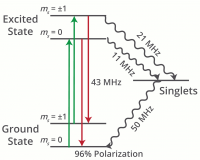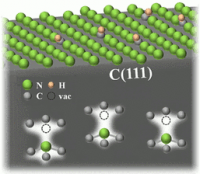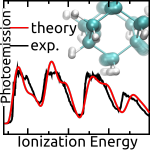Template:Highlights new
Our ab initio simulations determined the magneto-optical properties of the neutral divacancy in silicon carbide that contributed to understanding its qubit operation carried out by Prof. David D. Awschalom group.
Phys. Rev. X 7, 021046 (2017). DOI:10.1103/PhysRevX.7.021046
Our ab initio study identified the nitrogen terminated (111) diamond surface to host shallow nitrogen-vacancy centers for quantum sensing. In cooperation with Alex Retzker we showed, that special quantum simulations can be carried out with the nitrogen nuclear spins in this system
Nano Letters 17 (4), pp 2294-2298. (2017) DOI:10.1021/acs.nanolett.6b05023
We investigated the electron-phonon coupling in small diamond cages called diamondoids. These quantum systems are mostly modelled within the Born-Oppenheimer approximations, where the coupling between the electrons and vibration modes is not fully taken into account. In our study we shown that the severe electron-phonon coupling is a key point to properly describe the overall lineshape of the experimental photoemission spectrum. Our method goes beyond the typical Born-Oppenheimer approximation, where the electrons are pure electron-like quasi-particles. In our model, we deduced a link between the many-body perturbation approach of the electron-phonon coupling and the well-known Jahn-Teller effect.
Nature Communications 7: 11327. (2016). DOI:10.1038/ncomms11327


